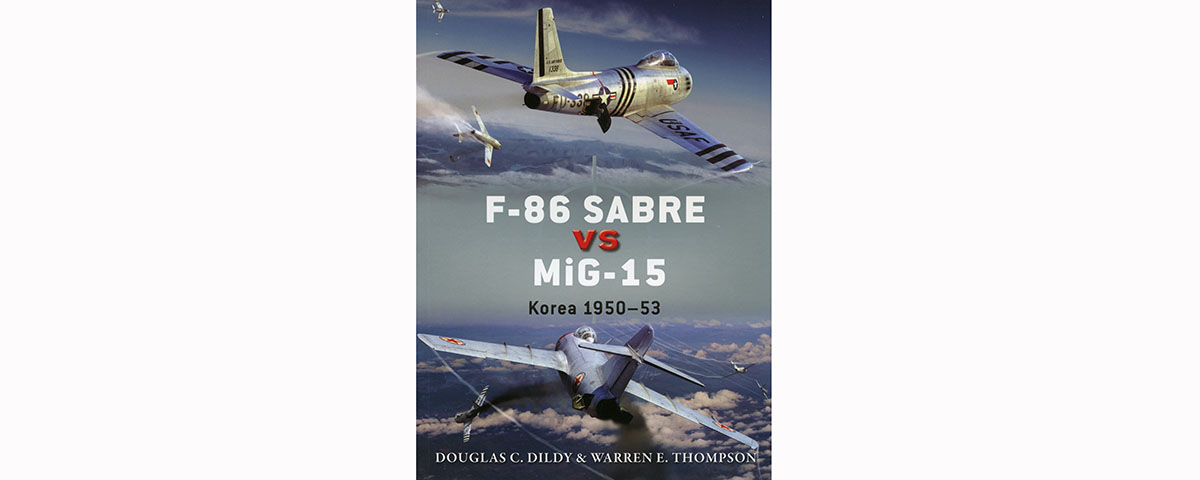F-86 SABRE VS MIG-15: Korea 1950-53
by Douglas C. Dildy and Warren E. Thompson, Osprey Publishing, Oxford, UK, 2013, $18.95
Just as posterity regards the Sopwith Camel and Fokker Dr.I as the classic dogfighters of World War I, and the Spitfire Mark I and Me-109E as the paladins of the Battle of Britain, the F-86 and the MiG-15 are regarded as the Korean War’s ultimate antagonists. That said, the appearance of F-86 Sabre vs MiG-15 will be welcomed by aficionados of Cold War air power, who might wonder why it took so long.
In the fall of 1950, the Soviet Union secretly committed two fighter aviation divisions of MiGs, flown mainly by veterans, to protect Chinese forces crossing the Yalu River. The U.S. Air Force rose to the challenge with F-86s, inaugurating a private sideshow to the conflict, often fought at 50,000-foot altitudes that only those fighters could reach, in a zone the Americans called “MiG Alley.” Benefiting from newly acquired information from the Russian and Chinese camps, jet age experts Douglas Dildy and Warren Thompson provide an unprecedented comparison of the performance, strengths and weaknesses of the two fighters and the pilots who flew them. More than the aircraft, it was the differing qualities of the pilots—Soviet, Chinese and North Korean—that explains how the MiGs’ fortunes went from admirably holding their own to suffering rising losses in the war’s last two years.
Cutting through the overclaiming on both sides, the authors present an analysis of the actual results of this confrontation and why it panned out as it did. Students of the early jet age should find F-86 Sabre vs MiG-15 an essential addition to Osprey’s “Duel” series.
Originally published in the March 2014 issue of Aviation History. To subscribe, click here.





